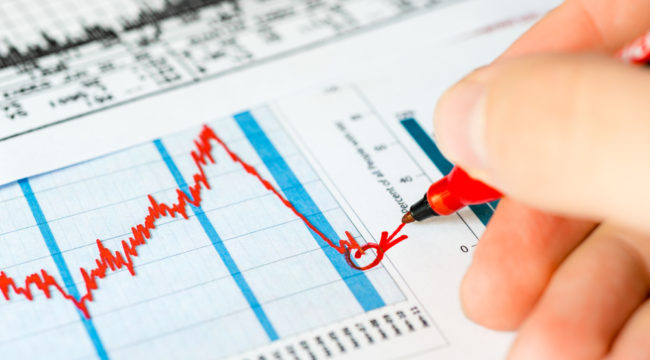When the “Melt-up” Melts Down
And so the moths speed to the flame…
Schwab says more clients opened brokerage accounts in the first half of 2017 than at any time since the dot-com fever:
New accounts are at levels we have not seen since the internet boom of the late 1990s, up 34% over the first half of last year.
Perhaps you recall what followed the internet boom of the late 1990s?
But you may not recall the bewitching flame that drew the moths to their fiery demise — the Nasdaq soared 200% over the 18 months before its 2000 high.
We’ve raised the possibility that today’s bull market has entered the same terminal “melt-up” phase…
When fear gives way… the bears give up… and the crowd gives in.
The same crowd ultimately gives back — royally — as it did when the dot-com melt-up melted down in 2001.
Now the all-important question:
If stocks have entered their final melt-up phase… when does the inevitable meltdown start?
Today, a clue… and a possible answer…
But first a premise, by way of Blackthorn Asset Management’s Terence Reilly:
When central banks add liquidity, asset prices will soon follow suit and rise with the newfound liquidity. When the Fed subtracts liquidity, the market will also soon follow in negative course. You cannot predict when or how far the market will move, but there is no point in fighting the Fed. Whatever it does, the market will do in time.
The Federal Reserve is in a “tightening” cycle.
Last month it also began draining a major source of liquidity — the behemoth $4.5 trillion balance sheet it inflated after the last crisis.
A mere $10 billion a month for now, that figure is expected to reach $50 billion a month by the end of next year.
But if the Fed is tightening, if it is draining kerosene from the system… how could stocks melt up?
Ah, but the Federal Reserve doesn’t run a corner on the world’s arsenous liquids…
The European Central Bank, Bank of England, Swiss National Bank, Bank of Japan and Bank of China all produce liquidity of their own.
And many of these foreign central banks are still soaking markets in combustible credit…
By April, Bank of America (BofA) noted that central banks around the world had already purchased $1 trillion in assets to that point of the year.
By the end of the year, it will be roughly $2 trillion… if our agents report the news accurately.
If you wish to explain the market’s recent highs — at least in part — perhaps you have your man.
“Even with the Federal Reserve telegraphing to the market that it intends to shrink its balance sheet,” affirms the aforesaid Reilly, “central bank balance sheets worldwide have still grown at 8% year over year.”
But what happens when those same balance sheets stop expanding?
The European Central Bank is expected to taper its bond purchases this month… as is the Bank of England.
These bond purchases continue — but at a lesser gait.
But at the projected rate, global central bank bond purchases taper to zero by the end of next year.
Deutsche Bank’s Alan Ruskin:
By the end of next year, the combined expansion of all the major central bank balance sheets will have collapsed from a 12-month growth rate of $2 trillion per annum to zero.
Zero Hedge, by way of confirmation:
2018 will see the world’s most important central bank balance sheets shift from a 12-month expansion of more than $2 trillion to a broadly flat position by the end of 2018, assuming the Fed and ECB act according to expectations.
Does the melt-up melt down by the end of next year… as the credit runs dry?
If the relationship between central bank credit and markets holds true, maybe.
But Zero Hedge pointed out the joker in the deck:
“Assuming the Fed and ECB act according to expectations.”
Maybe markets take a fright and the central banks flood markets with more kerosene.
Why wouldn’t they? They’ve done it before.
Then it’s another spin of the merry-go-round… and the cycle starts over again… with even more combustible fuel in the system.
“The danger is that [central banks] have let the party go on too long, and it’s already too late,” says Bloomberg.
We do not disagree.
But some parties last a lot longer than expected.
Unfortunately, they also produce the worst hangovers…
Regards,
Brian Maher
Managing editor, The Daily Reckoning



Comments: